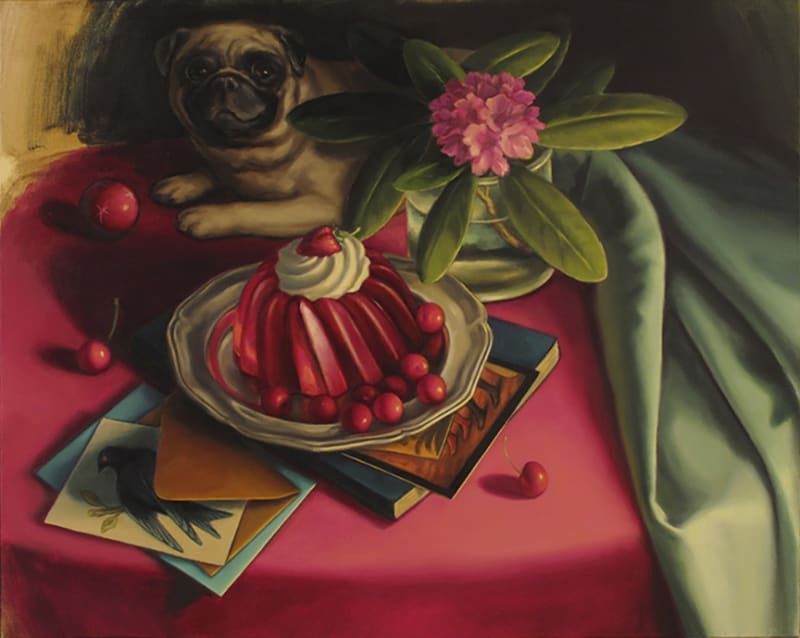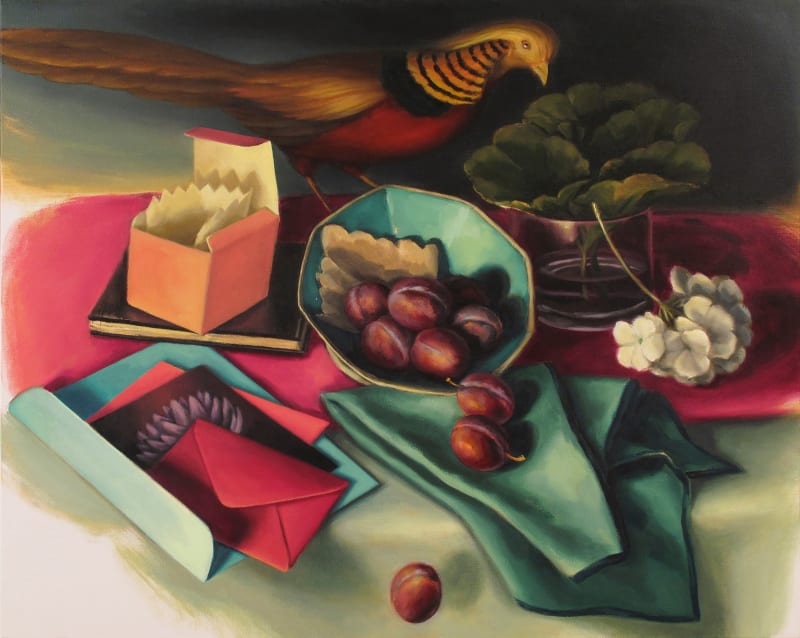The objective in my work is to express the feeling of time and of place, pinning elusive moments that make up a life well lived where beauty and mystery are primary. Our recent American cultural history has a parallel in the Dutch Golden Age and similarly like a Vanitas painting implies an end may be coming. The animals in my paintings are messengers from the natural world. Often the table serves as a plain suggesting landscape or a proscenium on which objects interrelate. All these elements interweave various levels of illusion and reality to create a charged dramatic narrative.
This recent body of work has emerged in the last two years of contemplating loss and consolation; loss of our illusions of justice and a bountiful healthy environment, loss of a stable future. As we bear witness to our failures, missed opportunities, loss of our natural environment, the longing for a more authentic virtuous world intensifies. Countering these anxieties is the redemptive power of beauty, the consolation of books, letters, the fragrant fruits and flowers of summer, memories of friends around a table at dusk. They are used here as signs of a reverence for nature and our shared cultural history. Into these tableaux, comes a representative from the natural world, a bird, a rabbit or other creature, to deliver a message, a reminder, or is it a warning?
The juxtapositions are enigmatic just as our lives are sometimes mysterious to us. They refer to our contemporary environment and aesthetic understanding. At the heart of this body of work is a belief that life affirming universal truths can be found in these created worlds.
I seek to present the feeling of “what is now” in a representational style of painting. As poetry must be written in understandable language, painting in this time of upheaval can speak to us in comprehensible forms without pretention. The paintings speak to all people equally, moving beyond political identities. Beauty in all its tragic and opulent form is our consolation.
I have been influenced equally by Italian and Dutch Baroque painting, by the elegance of Chardin, by Dada and Cubist images and the American Chicago Imagists, but even more by centuries old reliquaries that I’ve studied in Italy. I am interested in the enduring iconography of the object in Western art.




